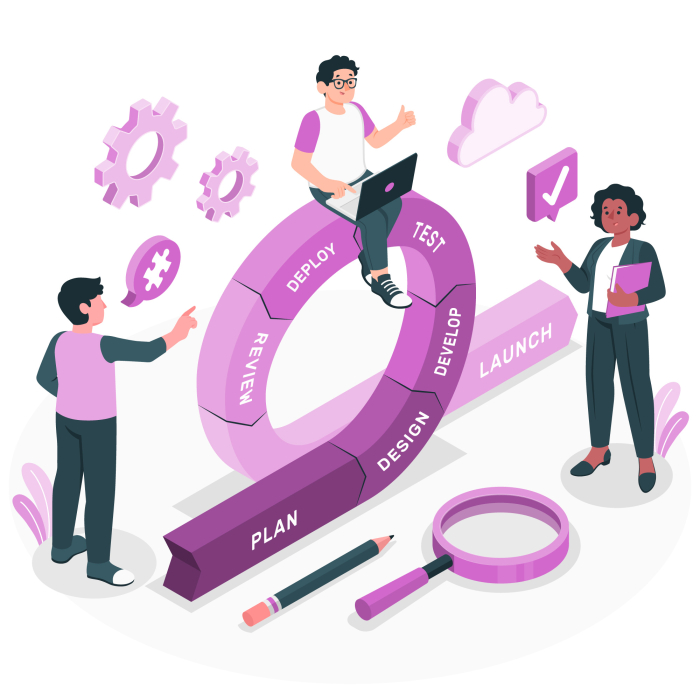
 Data Structure
Data Structure Networking
Networking RDBMS
RDBMS Operating System
Operating System Java
Java MS Excel
MS Excel iOS
iOS HTML
HTML CSS
CSS Android
Android Python
Python C Programming
C Programming C++
C++ C#
C# MongoDB
MongoDB MySQL
MySQL Javascript
Javascript PHP
PHP
- Selected Reading
- UPSC IAS Exams Notes
- Developer's Best Practices
- Questions and Answers
- Effective Resume Writing
- HR Interview Questions
- Computer Glossary
- Who is Who
Agile Project Manager: Job Description, Responsibilities, and Skills
Agile is a technology used to solve problems and create innovative insights for projects. Agile project management emphasizes team participation over autocratic leadership. It emphasizes to offers a holistic over-leader emergence.
Fundamental Role of Agile Project Manager
Let us look into some of the crucial roles an Agile project manager plays.

Crucial Promoter
Agile project managers aim to encourage their crew and remove possible impediments to project achievement. They will be responsible for the charge of organizing the whole organization around Agile project management, implementing new procedures, and interacting with corporate stakeholders.
Tactical Instructor and Mentor
In an Agile setting, change happens rapidly. Project managers will be responsible for their employees in learning the latest technologies, procedures, and policies.
Users and relationships take precedence over systems and instruments. Employees are what propel the endeavor onward, not technology. Regardless of their technological sophistication.
Software testing is preferred above detailed evidence. Software instructions that are well-written are beneficial. Record keeping helps things easier to understand. However, well-functioning software is far superior. While having both is ideal, if forced to pick, an agile project manager should always go with quality programming over a good picture.
Teamwork is preferred above bargaining. Agile project managers involve consumers in the design phase, grasp their demands, solicit their comments, and have a greater likelihood of producing a faultless final product. They prefer working with clients rather than arguing against them. Thus reducing tension and increasing efficiency.
Adapting to change by adopting a strategy. Innovation is viewed as a costly impediment in typical project management. Agile project managers should know that change is unavoidable and enable it at any phase of the project. Alteration is not an impediment; it is a chance.
A Job Description Example
Specify extent and plan while delivering worth on a continuous and consistent basis; organize and give rise to status reporting and operating conferences; arrange and allocate daily updates; maintain challenges and threats appropriate variances from proposals and strategy construction process for client tasks.
Support team growth by keeping leagues responsible for their pledges, reducing obstacles to effective performance, utilizing dynamic capabilities to boost initiative strength, and training and growing players.
Assisting the executive in organizing service standards for the project scope, organizing stakeholder communications, and assisting in the development of a successful construction regime.
Create and supervise one well methodology, as well as promote strategic planning projects to apply Agile Project Management best practices.
Support team ownership, ensuring that an employee is actively involved in the project and contributing meaningfully, and boost a conclusion with excellent levels of excellence for the group.
Different Levels of Agile
Team - Level
In the entire project, Agile Consultants can play two unique responsibilities.
As a consultant, they will allocate the appropriate persons, procedures, and tools to boost team speed and performance.
Assuming the role of a coach, they advise coworkers on how to maximize their performance in collaboration with the customer.
Enterprise-Level
Because of the breadth of these tasks, Agile Project Managers face more substantial obstacles.
A manager will be in charge of overseeing various Agile teams and existing performance with operations beyond their purview.
They assume leadership and management of large, organizational, and complicated projects.

Hybrid-Level
The Hybrid Agile approach mixes Agile and non-Agile methodologies, which include the Traditional waterfall.
Develop an effective project planning strategy that works best for preparing and monitoring tasks. Filling a Hybrid Agile job is difficult since the APM must consider conventional methodologies as well as the Agile methodology.Reach the firm objectives within the mission's constraints.
Agile Project Manager Responsibilities
Assisting the organization in attaining a high level of accomplishment and integrity, keeping teams responsible for their job, clearing impediments, and teaching less skilled.
Designing the project's timeline and scope while balancing this with on-time and consistent value delivery, as well as arranging and conducting weekly and program review meetings.
creating Agile initiatives that provide exceptional economic potential to clients.
Assisting the responsible person in controlling stakeholder communications, trying to manage customer needs for deliveries, and establishing an efficient project plan.
Required Agile Project Manager Skills
APMs should concentrate on the key parts of the project while ignoring needless or distracting tasks.
The capacity to not only remain cool under pressure but to flourish under it.
Outstanding leadership trait is needed for working with groups and communicating with management and other non-team members.
The capacity to collaborate with others effectively
Demonstrating familiarity with rapidly shifting aims, as well as developing agility and flexibility.
Agile is a strong platform that includes numerous technologies in a single platform.
The optimal APM has proper project management accreditation and expertise.
Collaborating Agile or expressing the Scrum Master position may appear inseparable. The excellent thing is that adopting Agile breathes fresh life into a profession at the intersection of multiple software developments, enabling project managers to innovate themselves and remain perpetually engaged.

